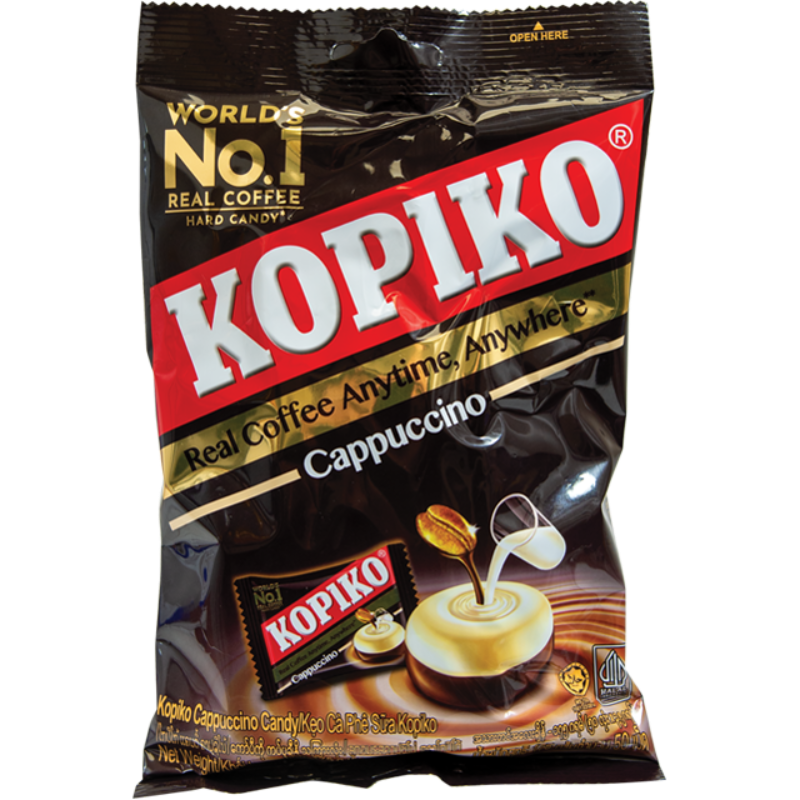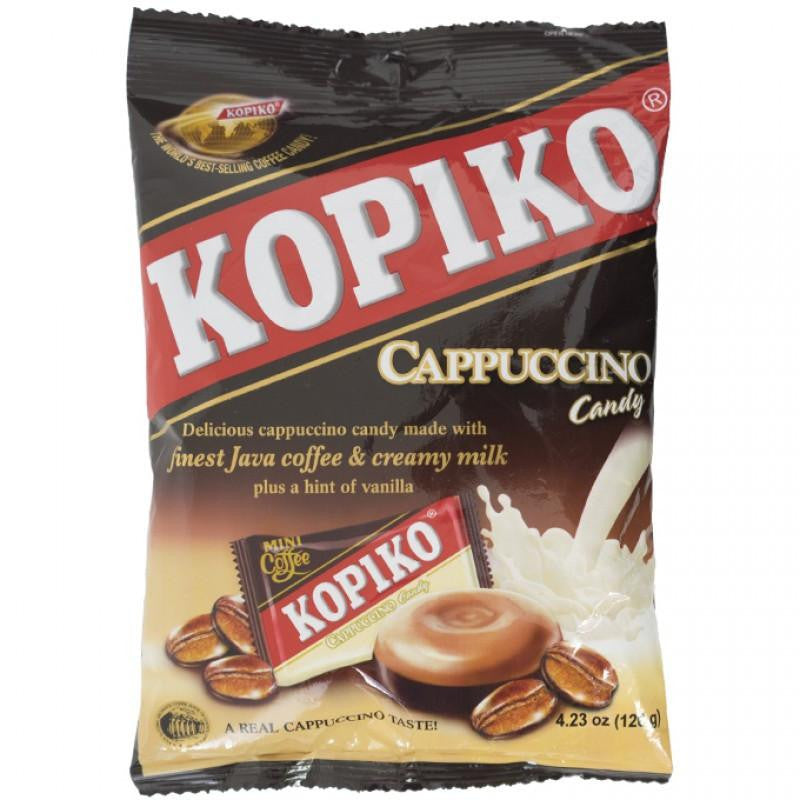Kopiko Cappuccino Hard Candy
$3.79
- Description
- Ing & Nutr Facts
- Reviews
- Prop 65 Warning
Most popular Indonesian cappuccino coffee candy, Kopiko. The packaging for this candy changes quite regularly. At one point the company tried to brand the candy as CoffeeSHOT to distinguish it from their powdered instant coffee mixes, but that seems to have been abandoned in late 2019 as it is now referred back as just Kopiko candy.
Choose your size! The bigger 5.29 oz bag has more pieces (~50) and they are smaller, sold mostly in Asia. The smaller 4.23 oz bag has less pieces but they are bigger (~30) as its made for the American market. The recipe is the same otherwise.
California residents please see Prop 65 Warning tab above.
Nutrition Facts
Serving Size 2 pieces (about 6g)
Serving Per Container 25
| Amount Per Serving | ||
|---|---|---|
| Calories 20 | ||
| % DV (2,000 calorie diet) | ||
| Total Fat 0g | 0% | |
| Saturated Fat 0g | 0% | |
| Trans Fat 0g | ||
| Cholesterol 0mg | 0% | |
| Sodium 10mg | 0% | |
| Total Carbohydrate 6g | 2% | |
| Dietary Fiber 0g | 0% | |
| Sugars 3g | ||
| Protein 0g | ||
| Vitamin A 0% | Vitamin C 0% | |
| Calcium 0% | Iron 0% | |
Ingredients: Sugar, Glucose, Palm Oil, Milk Powder, Coffee Extract, Butter, Salt, Lecithin, Coffee Flavor, Caramel, Vanillin *Contains: Milk and Soybean
Tastes like a cup of coffee, I am addicted!
Got a bag for everyone in the office. Definitely our favorite coffee candy!
On note on packaging, there were a number of samples included with my order. Great idea, I found a few new candies that were amazing!
I appreciate the efficient and expedited manner in which the candy was delivered,not to mention it tasted great.
Have ordered since then and will continue to do so.
![]() WARNING: This product can expose you to chemicals such as 4-Methylimidazole, Acrylamide, which is known to the State of California to cause cancer. For more information, go to www.P65Warnings.ca.gov
WARNING: This product can expose you to chemicals such as 4-Methylimidazole, Acrylamide, which is known to the State of California to cause cancer. For more information, go to www.P65Warnings.ca.gov
What is Proposition 65?
Proposition 65 requires businesses to provide warnings to Californians about significant exposures to chemicals that cause cancer, birth defects or other reproductive harm. These chemicals can be in the products that Californians purchase, in their homes or workplaces, or that are released into the environment. By requiring that this information be provided, Proposition 65 enables Californians to make informed decisions about their exposures to these chemicals. Proposition 65 also prohibits California businesses from knowingly discharging significant amounts of listed chemicals into sources of drinking water. Proposition 65 requires California to publish a list of chemicals known to cause cancer, birth defects or other reproductive harm. This list, which must be updated at least once a year, has grown to include approximately 900 chemicals since it was first published in 1987. Proposition 65 became law in November 1986, when California voters approved it by a 63-37 percent margin. The official name of Proposition 65 is the Safe Drinking Water and Toxic Enforcement Act of 1986.









